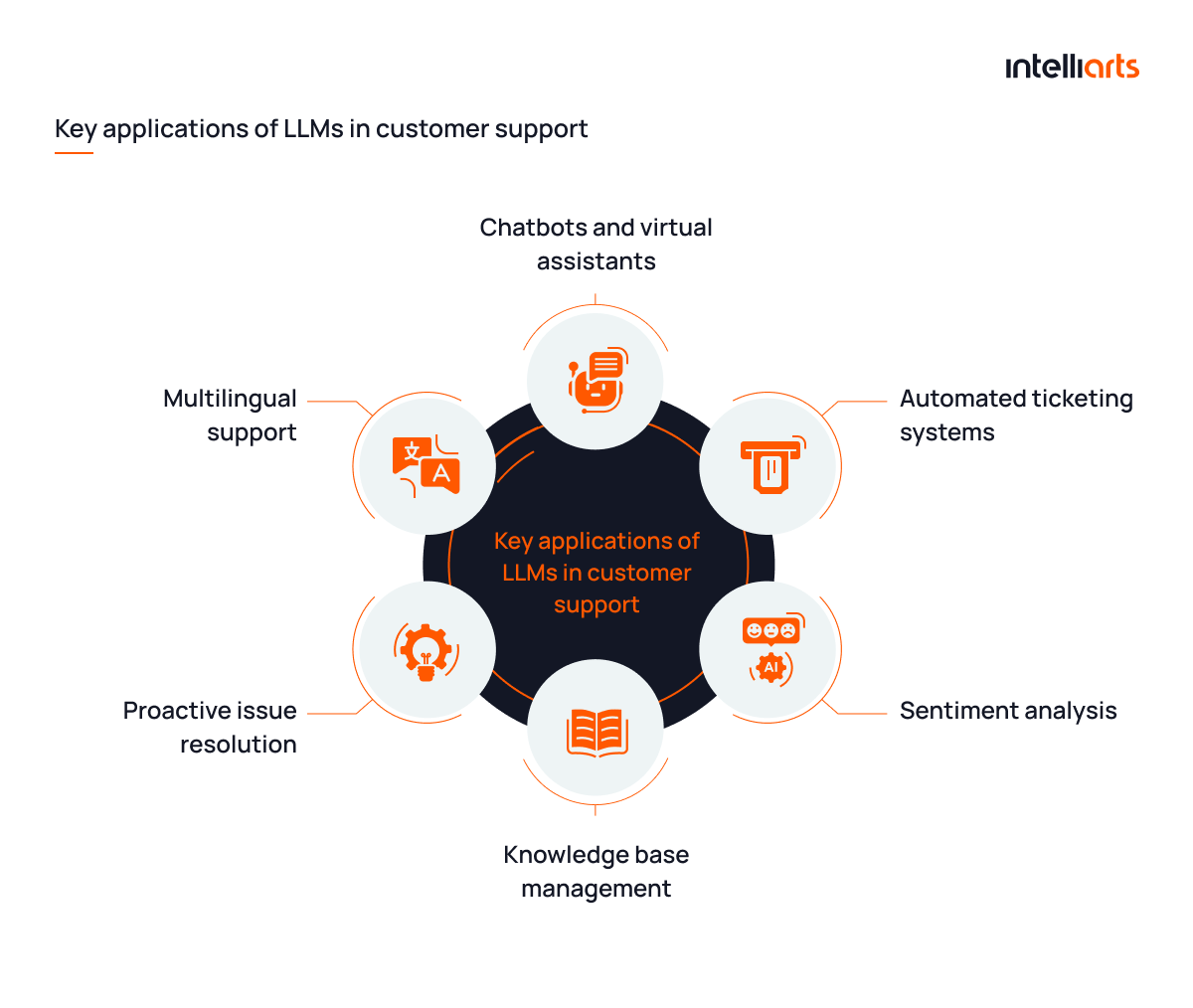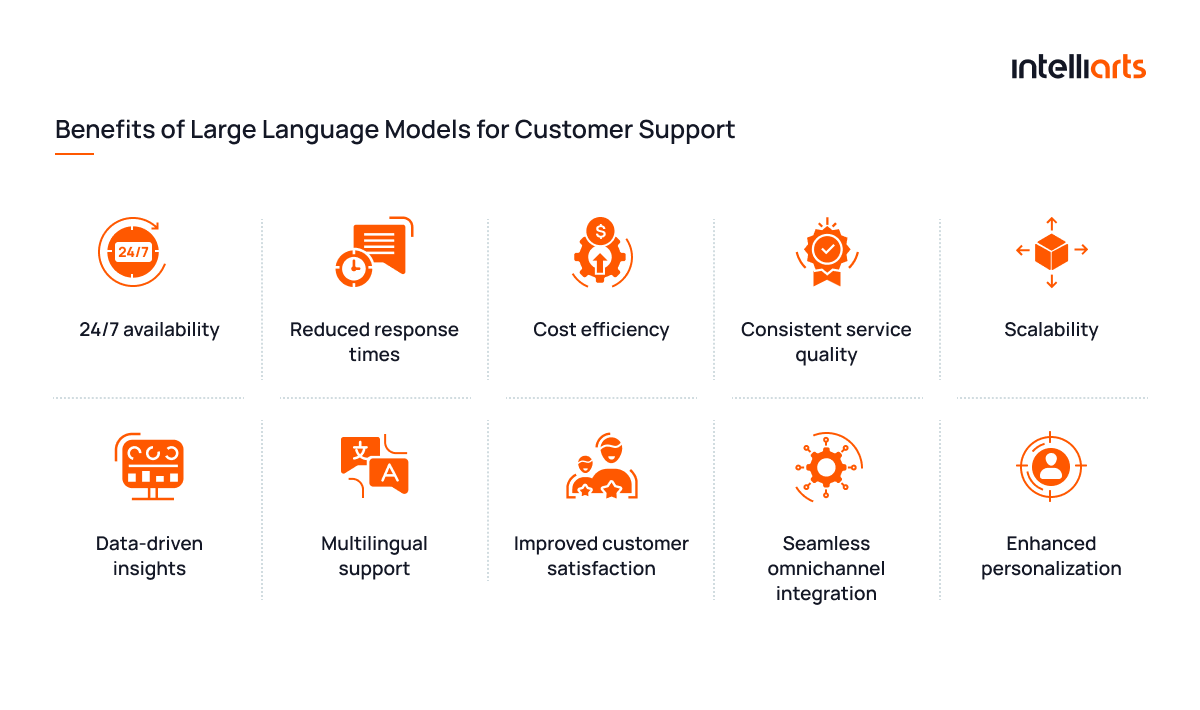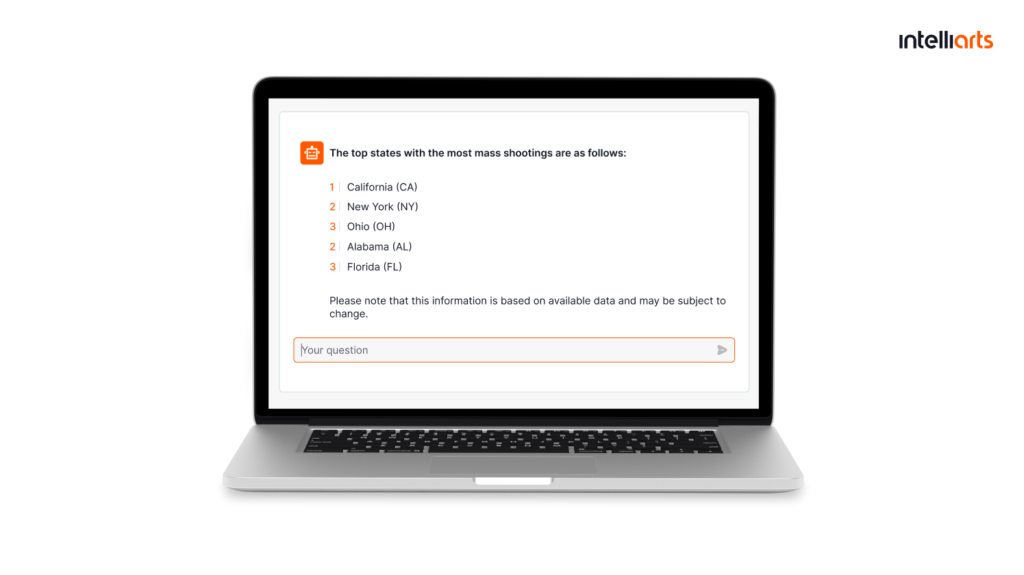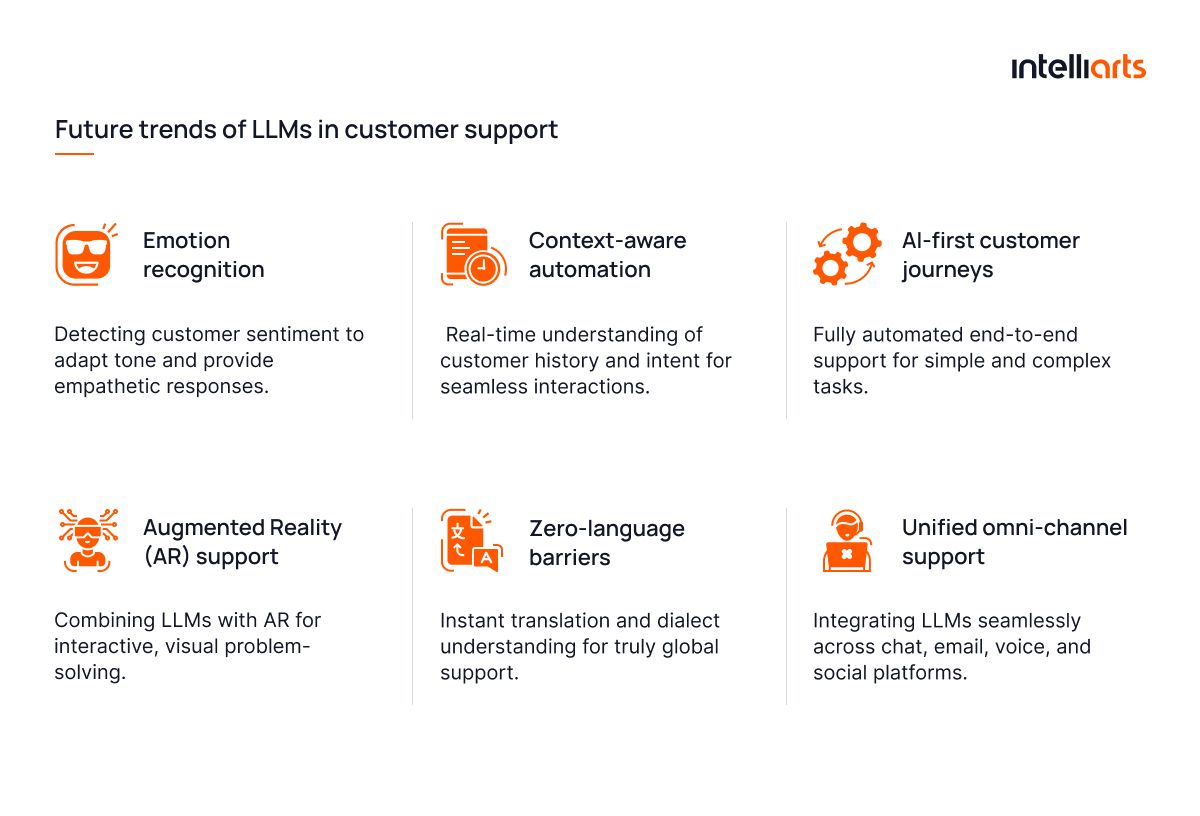Customer support is known for many resource-intensive processes, from handling data to addressing customers’ inquiries. Automation in customer support is one of the ways how businesses attempt to reduce expenses and enhance satisfaction. Large Language Models (LLM) is exactly the technology that offers a solution.
Recent studies reveal that existing implementations of LLMs contribute to a 10% increase in customer support efficiency. Another research shows that 78% of customer service specialists claim that AI and automation affect their efficiency in the workplace positively.
In this post, you’ll discover how LLMs are integrated with customer service operations and what business benefits they can bring. Besides, you’ll review key LLM customer service applications and figure out how to understand whether your business can actually benefit from adopting LLMs.
LLM integration with customer service operations
First, let’s get to know several key concepts:
An LLM (Large Language Model) is an advanced artificial intelligence system trained on vast amounts of text data to understand and generate human-like language.
You may familiarize yourself with the large language models list in another blog post by Intelliarts.
At the cornerstone of this blog post is the usage of LLMs to boost customer service operations, which is defined as the following:
The usage of LLMs in customer service is the integration of large language models into customer service operations with the prospect of enhancing tedious tasks and automating labor-intensive processes.
The integration is a multi-step procedure aimed at connecting AI-based software solutions with business processes and putting the resulting solution to good use.
The basic LLM for customer service integration steps include:
- Identify use cases: Define tasks like FAQs, ticket routing, or multilingual support.
- Select an LLM: Choose a suitable model like GPT that fits your needs.
- Train and fine-tune: Customize the model with industry-specific data.
- Integrate into platforms: Connect to your CRM, chatbots, or helpdesk tools.
- Monitor and optimize: Continuously track performance and refine workflows.
Note that LLM integration is a complex business and a technology task that typically requires the involvement of a trusted engineering partner. Should you need custom ML development services, don’t hesitate to reach out to Intelliarts.
Key applications of LLMs in customer support
Here’s a scope of well-adopted LLMs in customer support and pain points that businesses aim to address with this technology:
#1 Chatbots and virtual assistants
LLM-powered chatbots handle routine queries and simple tasks, offering instant, consistent responses and 24/7 availability. They improve customer service efficiency while reducing the need for human agents in repetitive interactions.
Pain points addressed:
- Long response times for basic queries.
- Overburdened support teams handling repetitive tasks.
- High operational costs for 24/7 staffing.
- Inconsistent service delivery.
- Limited scalability of traditional support teams.
Examples:
- Duolingo’s AI Chatbots for language learning assistance
- Mastercard’s AI Assistant (KAI) for financial transactions
- AI-driven assistant for students by Intelliarts
#2 Automated ticketing systems
LLMs in automated ticketing classify, prioritize, and route support tickets based on content, urgency, or customer history to ensure faster resolution. They minimize manual effort while improving ticket management efficiency.
Pain points addressed:
- Slow response to critical issues.
- Inefficient ticket routing causing delays.
- Inaccurate categorization of support requests.
- High reliance on human agents for routine tasks.
- Difficulty in scaling ticket management operations.
Examples:
- Zendesk AI-Powered Ticketing for automated ticket categorization
- Zoho Desk Zia AI for ticketing optimization
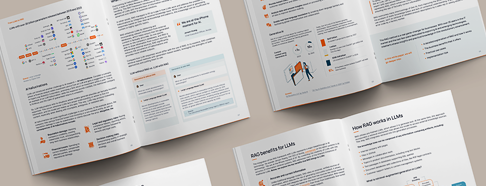
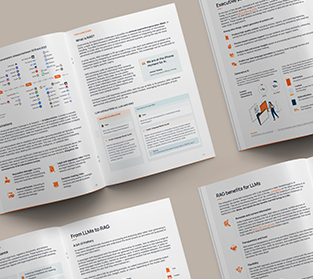
#3 Sentiment analysis
LLMs for sentiment analysis assess customer emotions and intent within messages, tailoring responses or escalating cases as needed. This enables personalized support and improved customer satisfaction.
Pain points addressed:
- Inability to identify and address frustrated customers promptly.
- Lack of personalized responses.
- Missed opportunities for proactive problem resolution.
- Ineffective escalation processes for sensitive cases.
- Difficulty in maintaining customer loyalty during negative experiences.
Examples:
- Sprinklr AI Sentiment Analysis for real-time emotion tracking
- Salesforce Einstein Sentiment for understanding customer moods
#4 Knowledge base management
Using LLMs for customer support, businesses can efficiently manage and retrieve information from knowledge bases, providing accurate and contextually relevant answers to customer queries. This ensures faster, more reliable support.
Pain points addressed:
- Difficulty in accessing specific information from large knowledge bases.
- Inconsistent or incorrect responses to customer questions.
- Wasted time on manual knowledge retrieval.
- Overburdened support agents due to repetitive information queries.
- Inefficient knowledge base updates.
Examples:
- Intercom Articles for instant knowledge base recommendations.
- Freshdesk Freddy AI for automated knowledge base self-help articles and guide generation.
Explore how Freshdesk Freddy AI enables self-help for customers in the video below:
#5 Proactive issue resolution
LLMs can transform customer service by identifying potential issues through data analysis and alerting teams before customers report them. This ensures faster resolutions and improved customer trust.
Pain points addressed:
- Reactive support leading to customer frustration.
- Extended downtime or unresolved issues.
- Lack of insights into recurring problems.
- Missed opportunities to enhance customer loyalty.
- Increased operational costs from preventable issues.
Examples:
- ServiceNow Predictive Intelligence for proactive IT support.
- IBM Watson Assistant for predicting and resolving customer issues.
You may be interested in exploring the usage of text generation models in business since it complements insights into using LLMs in customer support.
#6 Multilingual support
LLMs for customer support enable seamless communication in multiple languages and even regional dialects, ensuring accessibility for a global customer base. This reduces language barriers without the need for human translation.
Pain points addressed:
- Inability to serve non-English-speaking customers efficiently.
- High costs of hiring multilingual support agents.
- Delayed responses due to translation needs.
- Inconsistent translations affecting customer experience.
- Limited scalability in global markets.
Examples:
- Microsoft Translator with AI integrated into support systems.
- Shopify’s Multilingual Chat Support with AI for serving merchants and buyers in their preferred languages.
The benefits and challenges of automating customer support with LLMs
There are many value-adding benefits to having automated customer support. The most impactful ones are provided in the image below:
Any technology innovation naturally comes with certain risks and potential issues. Here are common challenges related to using LLM for customer support and potential solutions to them:
#1 Accuracy and reliability: LLMs may generate incorrect or irrelevant responses.
- Solution: Implement continuous training with high-quality data and monitor outputs.
#2 Bias and fairness: Models can inherit biases from training data.
- Solution: Regularly audit outputs and use diverse, unbiased datasets.
#3 Data privacy: Handling sensitive customer information raises privacy concerns.
- Solution: Use encrypted data storage and comply with privacy regulations like GDPR.
#4 Context understanding: LLMs may misinterpret nuanced customer queries.
- Solution: Train models with domain-specific data and test for contextual accuracy.
#5 Cost management: LLM training and deployment can be expensive.
- Solution: Use pre-trained models and fine-tune only where necessary.
#6 Language and dialects: LLMs may struggle with regional dialects or less common languages.
- Solution: Customize models with localized datasets and ongoing updates.
Among the mentioned challenges are ones related to data preprocessing in ml. Explore how to process data in ML in another blog post written by Intelliarts experts.
How to understand whether it is worth implementing LLMs into your customer support
The research reveals that integrating LLMs can decrease the time agents spend per customer interaction by approximately 10%, resulting in considerable annual savings and enhancing customer satisfaction. As the usage and uselessness of large language models in customer service grows, even higher results should be achievable.
You are probably curious whether the development of an LLM for customer service is worth the investment and effort. Well, you can estimate whether the ROI of this initiative will likely be positive or negative by assessing the potential for automation with LLM in your business environment.
Here are the scenarios when it’s advised to consider implementing LLM for customer service:
- High volume of repetitive queries: If your team handles a large number of routine customer inquiries, LLMs can automate responses, saving time and resources.
- Need for 24/7 support: LLMs enable round-the-clock customer engagement without requiring human agents at all hours.
- Multilingual support requirements: If you serve a global audience, LLMs excel in providing responses in multiple languages efficiently.
- Complex query resolution: LLMs can assist agents in resolving sophisticated customer issues by analyzing context and generating relevant solutions.
- Scalability is a priority: For businesses aiming to scale their operations rapidly and without considerable expenses added, LLMs provide a cost-effective way to manage growing support demands.
At the same time, here are the scenarios where it’s recommended to consider alternative solutions:
- Highly personalized service needs: If your customers require deeply empathetic or personalized interactions, human agents are irreplaceable.
- Limited budget for training LLMs: Implementing LLMs requires upfront costs for training and fine-tuning. Smaller budgets might benefit from non-AI-driven automation tools.
- Low query volume: For businesses with minimal customer queries, investing in LLMs may not provide significant ROI compared to other options.
- Highly specialized domains: If your industry involves niche expertise or regulatory compliance, traditional expert systems may be more reliable.
Note. Depending on the nature of the niche and the problem, it’s possible to fine-tune a custom LLM-based solution so it can still be of use in this scenario.
- Data privacy concerns: Businesses handling sensitive customer data may need to prioritize compliance and consider less data-intensive solutions.
As you can observe, using LLMs for customer service is not a one-size-fits-all solution. However, scenarios where LLM-driven instruments can prove themselves useful vastly outnumber scenarios where such solutions may have limited impact.
Intelliarts’ expertise in LLMs
Let’s get through two examples of using LLM technology in custom software development:
LLM-enabled document review and compliance assistant
Challenge:
The legal firm faced difficulties manually reviewing a high volume of legal documents for compliance, which was time-consuming and prone to human error. They needed a solution to analyze contracts efficiently and identify regulatory discrepancies, so they reached out to Intelliarts as a trusted software engineering partner for assistance.
Solution:
Intelliarts designed a ChatGPT-powered AI assistant, which is basically an LLM model that uses Retrieval Augmented Generation (RAG) methods to enhance document analysis. The assistant identifies compliance gaps, suggests amendments, and handles both textual and tabular data. It’s trained on legal terminology and jurisdictional guidelines, ensuring accurate and context-aware responses.
Results:
The AI assistant reduced document analysis time from several days to a few hours, improving operational efficiency. It minimized errors in compliance checks and enabled employees to focus on high-value tasks. The solution was seamlessly integrated into the firm’s workflow.
GPT-driven solution for shipping contract analysis
Challenge:
Our customer, a startup in the logistics sector, aimed to simplify the complex process of comparing shipping contracts from major players like UPS and FedEx. These contracts often feature inconsistent formats, varying abbreviations, and diverse discount structures, making it difficult for small- and medium-sized businesses to identify the most cost-effective options. The customer sought a Proof-of-Concept (PoC) to validate their AI-powered business idea for contract analysis and cost optimization.
Solution:
Using the LLM technology, Intelliarts developed a PoC using GPT technology and OCR tools to extract and standardize critical contract details. The application analyzes shipping contracts, identifies key cost factors, and recommends optimal options through a user-friendly interface.
Results:
The created PoC showed 75-80% accuracy in analyzing contracts, validating the feasibility of the solution. The app simplified decision-making by highlighting weights, zones, packaging, and billing options, saving time and reducing shipping costs. Full-scale implementation is underway following customer testing.
Future of LLMs in customer support
One of the best things about LLMs is how well they interconnect with other technologies and their vast potential to improve customer support on multiple levels. Here are some of the trends of LLM for customer service that are currently gaining momentum:
It’s difficult to claim for sure what future trends in using Large Language Models for customer support will become commonly widespread. After all, it boils down to your business priorities and needs. Don’t hesitate to start adopting LLMs in your customer service operations where you see the opportunity.
Final take
In essence, LLMs have already revolutionized customer support by enhancing efficiency, scalability, and personalization. Whether automating repetitive tasks or enabling multilingual interactions, their versatility is unmatched. As automated customer service with large language models evolve, it starts reshaping how businesses engage with their customers, driving innovation and improving the overall customer experience.
In a complex technology project, such as creating a customer support solution using LLMs, having the right engineering partner is half the battle. Should you need assistance, don’t hesitate to reach out to Intelliarts. With more than 24 years of experience on the market delivering on-demand development, we can resolve your business needs with flying colors.
FAQ
1. What industries can benefit the most from LLM-powered customer support?
Industries like e-commerce, healthcare, finance, and telecommunications benefit significantly from large language models for customer support, streamlining queries, personalizing responses, and reducing costs. LLMs to transform customer service are ideal for sectors requiring high interaction volumes and 24/7 availability, providing efficient, scalable, and consistent support service with LLMs.
2. Can LLMs handle multiple languages and regional dialects?
Yes, large language models for customer service can handle multiple languages and even some regional dialects, enabling seamless communication. LLMs in customer service support use advanced natural language processing to adapt contextually and automated customer service with large language models globally effective.
3. What ROI can we expect from implementing LLMs in our customer support?
Using LLMs for customer support reduces costs by automating repetitive tasks, improves customer satisfaction through faster resolutions, and boosts retention. ROI varies by scale but often includes reduced overhead and increased customer lifetime value due to enhanced customer service efficiency of large language models. Some companies even offer a referral program system that lets you explore AI tools with added incentives.



